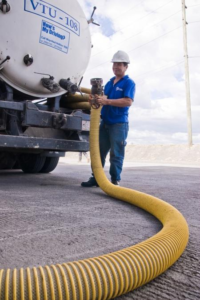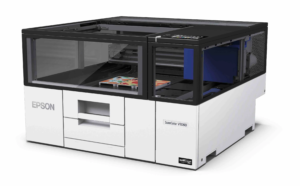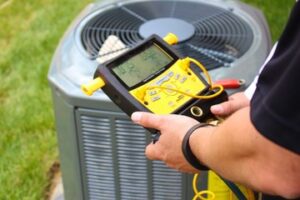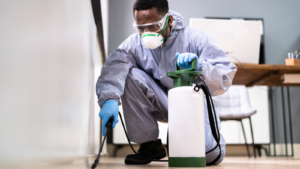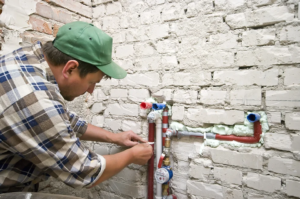Rodents can cause significant damage to homes and businesses. Recognizing the signs of a rodent problem early can prevent it from becoming out of control.
Look for rodent droppings, gnaw marks and tracks. Clean cluttered areas regularly to eliminate crumbs and other debris. Use natural repellents such as peppermint oil and ultrasonic repellers. Sealing cracks and gaps is also an important step to long-term rodent removal. Contact Rodent Retreat now!
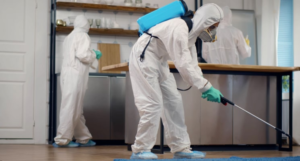
Rodents can contaminate food supplies with their urine and feces, spreading dangerous diseases in the process. They can also gnaw through electrical wiring, insulation, and woodwork, resulting in fire hazards, water damage, and structural integrity issues. They can even aggravate asthma and allergies in humans, especially children and those with a sensitivity to rodent dander.
The best way to prevent a rodent infestation is to take proactive measures. This includes fixing leaky faucets and pipes, ensuring that crawl spaces and basements are well-ventilated, and decluttering storage areas to reduce hiding spots for rodents. Additionally, natural repellents such as peppermint oil and mothballs can help deter rodents, although their effectiveness can vary.
A home that is prone to rodents may show signs of an infestation, including scratching or scurrying noises in walls and ceilings, especially at night when rodents are most active. Greasy rub marks and smudges around doors, windows, or other areas may also indicate rodent activity.
Other indicators of rodents include gnaw marks on woodwork, food packaging, or furniture. These marks are the result of rodents’ continuous gnawing to keep their continually growing incisors at a manageable length, and they can lead to severe damage. Newer gnaw marks are lighter in color and gradually become darker as the rodent chews away at materials.
The most common entry points for rats and mice are cracks, crevices, and gaps in the foundation, roof, or walls. Sealing these openings promptly with durable materials can keep rodents out. For instance, caulk or expanding foam can be used to fill small gaps near utility lines and in the foundation. Steel wool can be stuffed into these holes to further deter rodents, as they cannot chew through it.
It’s important to inspect the exterior of your home regularly for potential rodent entry points. Gaps around chimneys, vents, and open windows should be properly covered with screens or weather stripping to prevent rodents from climbing in through them. In addition, repairing and replacing damaged roofing material can help prevent rodents from entering through the roof. It’s also a good idea to periodically inspect the foundation, focusing on areas where cracks or holes may appear.
Identifying Rodents
Rodents are notorious for carrying diseases, and the presence of mice or rats indicates a serious problem that must be addressed immediately. The first step is to identify the rodent species. While mice and rats may look similar, their distinguishing features, such as fur color, ear and tail proportions, size, and droppings help to differentiate between them. Mice and rats are also able to leave greasy rub marks on surfaces, indicating regular activity. Droppings along frequently traveled paths indicate high-traffic areas where traps and bait should be placed.
In addition to seeing rodents, other signs of a rodent infestation include hearing scurrying sounds in walls and ceilings, as well as gnawed or chewed items. Rodents will also build nests in sheltered places, such as attics and crawl spaces. The size and shape of the nest will indicate the type of rodent. The nest may be made from wood, paper or even insulation. The odor of urine is another clear indicator of rodents. Rodents have a musky smell that emanates from their bodies and urine, especially when living in a confined space.
Rats and mice are most likely to infiltrate homes, but other rodents, such as squirrels, gophers, moles, chipmunks, and voles, can damage your property and create hazards as they dig up and disrupt gardens and lawns. You can help prevent these pests by regularly trimming trees and weeds, keeping food in airtight containers, and reducing clutter both inside and outside of your home.
The best way to reduce the chances of a rodent infestation is to eliminate attractive food sources and water sources for these creatures. Regularly inspecting your yard and house will help you identify potential entry points, such as cracks or gaps around pipes and vents. Using materials like metal mesh, steel wool, and concrete to close these openings can help keep out mice and rats. Sealing entry points is particularly important after severe weather or during construction projects. If you are unable to eliminate a rodent problem yourself, consider hiring a professional. A trusted local New Jersey rat exterminator will provide relief from rodents and safeguard your health and property.
Sealing Entry Points
Rodents can be a serious problem for homeowners. They can cause damage, leave droppings throughout the home, gnaw holes in wires and other items, and spread bacteria and pathogens. They also reproduce rapidly, resulting in a large population in short order. Taking preventative steps will help to deter rodents. These include storing food in airtight containers, using garbage bins with tight-fitting lids and regular trash disposal, and sealing gaps in walls, floors and foundations with caulk or steel wool.
Rodents seek out quiet, warm spaces to live in and nest in, such as attics, wall cavities and behind appliances. They also seek out water and food. Often, they enter homes to gain these resources and avoid predators and harsh weather. Once inside, they can wreak havoc with food, tamper with utilities and cause fires, as shown by the 20% of house fires that are caused by rodents.
To make your home less attractive to rats and mice, trim shrubbery and trees to keep them from touching your home or structures, and remove piles of wood and leaf litter. Eliminate moisture sources, like standing puddles and condensation, by fixing leaky pipes and draining rain gutters. Store firewood away from your home, and use gaskets and screens on dryer vents and stove exhausts.
Mice and rats can squeeze through openings as small as a quarter inch, so seal any cracks and crevices on the foundation, around basement windows and doors, and in the siding of your home. Sealing gaps with caulk, expanding spray foam, copper mesh or metal, sheet metal or hardware cloth will deter rodents from entering your home.
You should also inspect your property regularly, looking for rodent pathways and examining your yard for signs of rodent activity, such as rodent droppings, gnaw marks, burrows and tunnels. You should also examine your outdoor lighting, as rodents can chew through electrical wires and cause them to shut off. If you do find evidence of a rat or mouse problem, you should immediately take action and implement preventative measures. If you have a more persistent problem, consider hiring a professional for effective rodent control.
Hiring a Professional
Having rodents around the home is a serious nuisance. They spread diseases, contaminate food, cause structural damage to buildings and chew through wires that can result in fires. They also create noise and disturb people’s peace of mind, especially if children are sleeping or playing in their vicinity. Rodents reproduce quickly, so if a problem is left unattended it can get out of control in no time at all.
Whether you have mice, rats, or both, hiring a professional pest control company will help to prevent future infestations as well as eliminate the current ones. Professional pest control services use products that are safe for the environment and non-toxic to humans. They can also seal entry points, which prevent rodents from coming back into your home.
Rodents are skilled at hiding, which is why it can be difficult to spot an infestation until it’s too late. You should watch for signs of gnawing on wires and wood, droppings, and burrows in your yard or garden. If you suspect a rodent problem, call in a professional evaluator to inspect your property and recommend the best course of action.
Rodents are excellent at finding ways into the home, exploiting tiny cracks and openings. A professional pest evaluator will be able to identify these entrance points and recommend any necessary repair work or sealing measures. They will also provide you with live traps or baits to capture any unwanted critters and release them away from your home.
In addition to the cosmetic and health problems that rodents cause, they can also ruin a business’ reputation by giving off the wrong impression. Employees and clients will be scared off by the sight of a rodent running about the office, which can lead to lost business and money.
Taking the steps described above will go a long way in keeping rodents out of your house. However, rodents are persistent and creative in their attempts to enter your home, so you should always be prepared for them to try again. If you have tried to rodent-proof your home and are still having trouble, contact a local pest control company to schedule an evaluation.
